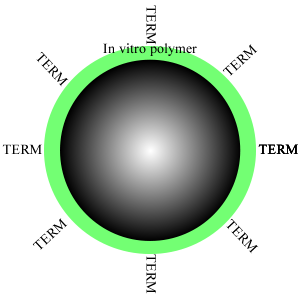Nanoparticle Functionalized Filters - Nanopartz
Nanopartz offers filters specifically for liquids and gases that are decorated with a wide variety of gold, gold alloy, and other metal nanoparticles. These include spherical gold nanoparticles, platinum, palladium, copper, silver and titanium nanoparticles, along with gold alloys of these same metals. These nanoparticles come with a number of different surface functionalizations to choose from: including no functionalization (completely bare), adsorbed ligands like citrate, covalent ligands including amine, biotin, streptavidin, antibodies, antigens, click, peptides, oligos, and more.
This family of products is well known for its resistant to temperature, salt, and pH, and for its exceptional loading capability. This product can be used in a multitude of applications, including diagnostics, purification, and therapeutics. Every filter is completely characterized including size, monodispersity, aggregation, residual chemicals, and total surface area. These filters are 1" diameter, glass fiber in a polypropylene and silicone housing with a standard female luer for input and male luer slip for output. Whereas the surface area of the filter is ~5cm2, the surface area of the impregnated 10nm spherical gold nanoparticles is, for example, ten times this amount or almost 50cm2.
The polypropylene filter holder is suitable for use with liquids and gases these holders feature a maximum operating temperature (liquids) of 80°C and a maximum operating pressure of 40 psi. This device is autoclavable.
A Certificate of Analysis (COA) is provided for every order exhibiting TEM and UV-VIS images and data, as well as DLS data.
Block Diagram

Table. Surface areas for different sized spheres. Note SPR is for gold nanoparticles only
| Diameter (nm) | Peak SPR Wavelength (nm) | NPS/filter | gnp surface area (nm2) | oligo/filter (nmoles) | Ab/Filter |
| 1.8 | 504 | 2.13E+15 | 2.16E+16 | 7.21E+00 | 2.76E+14 |
| 2.2 | 504 | 1.17E+15 | 1.77E+16 | 5.90E+00 | 2.26E+14 |
| 3 | 508 | 4.60E+14 | 1.30E+16 | 4.33E+00 | 1.65E+14 |
| 4 | 510 | 1.94E+14 | 9.74E+15 | 3.25E+00 | 1.24E+14 |
| 5 | 512 | 9.93E+13 | 7.79E+15 | 2.60E+00 | 9.93E+13 |
| 10 | 516 | 1.24E+13 | 3.90E+15 | 1.30E+00 | 4.96E+13 |
| 15 | 518 | 3.68E+12 | 2.60E+15 | 8.66E-01 | 3.31E+13 |
| 20 | 520 | 1.55E+12 | 1.95E+15 | 6.49E-01 | 2.48E+13 |
| 25 | 521 | 7.94E+11 | 1.56E+15 | 5.19E-01 | 1.99E+13 |
| 30 | 523 | 4.60E+11 | 1.30E+15 | 4.33E-01 | 1.65E+13 |
| 35 | 526 | 2.89E+11 | 1.11E+15 | 3.71E-01 | 1.42E+13 |
| 40 | 527 | 1.94E+11 | 9.74E+14 | 3.25E-01 | 1.24E+13 |
| 45 | 529 | 1.36E+11 | 8.66E+14 | 2.89E-01 | 1.10E+13 |
| 50 | 531 | 9.93E+10 | 7.79E+14 | 2.60E-01 | 9.93E+12 |
| 55 | 533 | 7.46E+10 | 7.08E+14 | 2.36E-01 | 9.02E+12 |
| 60 | 536 | 5.74E+10 | 6.49E+14 | 2.16E-01 | 8.27E+12 |
| 65 | 539 | 4.52E+10 | 5.99E+14 | 2.00E-01 | 7.63E+12 |
| 70 | 542 | 3.62E+10 | 5.57E+14 | 1.86E-01 | 7.09E+12 |
| 75 | 545 | 2.94E+10 | 5.19E+14 | 1.73E-01 | 6.62E+12 |
| 80 | 549 | 2.42E+10 | 4.87E+14 | 1.62E-01 | 6.20E+12 |
| 85 | 553 | 2.02E+10 | 4.58E+14 | 1.53E-01 | 5.84E+12 |
| 90 | 558 | 1.70E+10 | 4.33E+14 | 1.44E-01 | 5.51E+12 |
| 95 | 563 | 1.45E+10 | 4.10E+14 | 1.37E-01 | 5.22E+12 |
| 100 | 569 | 1.24E+10 | 3.90E+14 | 1.30E-01 | 4.96E+12 |
| 150 | 612 | 3.68E+09 | 2.60E+14 | 8.66E-02 | 3.31E+12 |
| 200 | n/a | 1.55E+09 | 1.95E+14 | 6.49E-02 | 2.48E+12 |
| 500 | n/a | 9.93E+07 | 7.79E+13 | 2.60E-02 | 9.93E+11 |
| 1000 | n/a | 1.24E+07 | 3.90E+13 | 1.30E-02 | 4.96E+11 |
| 1500 | n/a | 3.68E+06 | 2.60E+13 | 8.66E-03 | 3.31E+11 |
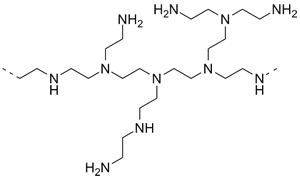
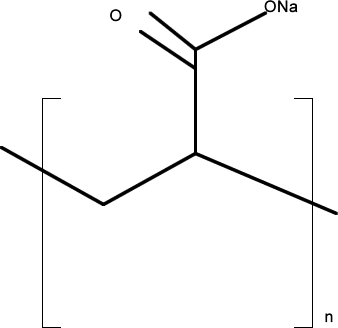
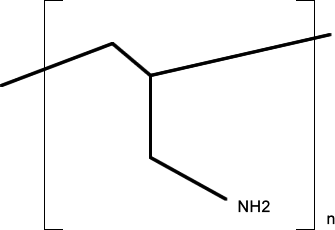
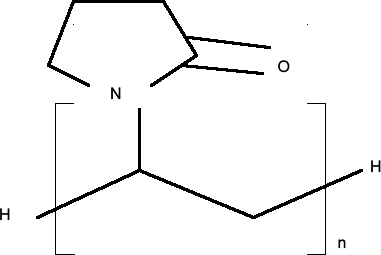

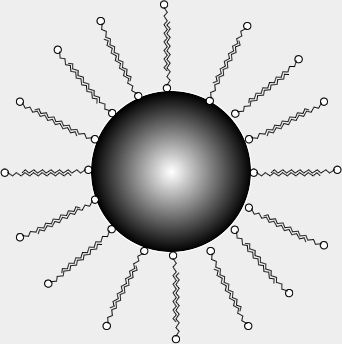

Functionalized magnetic nanoparticle with Nanopartz™ covalently bonded polymer
Loading Range (nm2)
|
Charge (mV) | |||
| Smaller particles | Larger particles | Smaller particles | Larger particles | |
PEG |
3 |
1 |
-27 |
-12 |
Alkyne |
4 |
2 |
-25 |
-25 |
Amine |
4 |
2 |
-20 |
20 |
Azide |
4 |
2 |
-25 |
-25 |
Biotin |
3 |
1.5 |
-25 |
-15 |
Carboxyl |
4 |
2 |
-38 |
-45 |
Methyl |
4 |
2 |
-27 |
-12 |
Streptavidin |
0.01 |
0.01 |
-25 |
-10 |
Neutravidin |
0.01 |
0.01 |
-25 |
-10 |
GSH (Glutathione) |
3 |
1.5 |
-25 |
-15 |
Protein A |
0.04 |
0.04 |
-25 |
-10 |
Protein G |
0.04 |
0.04 |
-25 |
-10 |
Maleimide |
4 |
2 |
-27 |
-12 |
NHS |
3 |
1.5 |
-25 |
-15 |
Hydroxyl |
4 |
2 |
-27 |
-12 |
Thiol |
5 |
5 |
-30 |
-30 |
Galactose |
2 |
2 |
-30 |
-30 |
Mutab |
5 |
5 |
30 |
40 |
Secondary IgG |
0.02 |
0.02 |
0.02 |
0.02 |
MW (g/mole) |
Zeta Charge (mV) |
Salt resistant? |
Concentration Sensitive? |
Easy to adsorb proteins? |
Easy to thiolate? |
Shelf Life at 4C |
|
Citrate |
192 |
-35 |
1.5mM |
Yes |
Yes |
Yes |
6 months |
Nanopartz Carboxylic Acid |
212 |
-30 |
15mM |
Less than Citrate |
Better than Citrate |
Better than Citrate |
years |
PEI |
100K |
30 |
150mM |
No |
Yes |
Yes |
6 months |
PAA |
10K |
-30 |
150mM |
No |
Yes |
Yes |
6 months |
PAH |
10K |
20 |
150mM |
No |
Yes |
Yes |
6 months |
PVP |
40K |
-10 |
0.5M |
No |
No |
Yes |
6 months |
CTAB |
364 |
35 |
0.5M |
Yes |
No |
No |
6 months |
BSA |
66K |
-15 |
0.5M |
No |
No |
No |
6 months |
Composition
These filters are shipped dry with no measurable residual reactants.
Custom Formulation
Please contact us.
Quantity
This product is available in 5 filters/ 1 housing kits.
Introductory Kits
Please contact us.
Delivery
Standard sizes are in stock. Special order sizes are shipped in two weeks or less. All domestic shipments are sent Fed Ex Standard Overnight delivery, international Fed Ex Priority 2 day. No shipments on Fridays except for dried particles. Saturday shipping available for extra charge.
Functionalization
This product comes with a number of different covalent and adsorbed options.
Shelf Life/Storage Temperature
This product is guaranteed for six months and should be stored at 4 °C after opening. Care must be taken to only use sterile glassware when working with this product.
Toxicity
This product is known to be noncytotoxic. This product has been sterilized and is biological free.
Sterilization
This product is sterilized.
For post sterilization testing, please choose Sterilization Certification.
For endotoxin purification, choose Endotoxin Purified.
Certifications
Every order comes with a Certification of Analysis that includes the following information. We use calibration traceable:
UV-VIS (Agilent 8453) for extinction and concentration measurements
NIR (Cary 500) for NIR extinction and concentration measurements
DLS (Malvern Nano ZS) for zeta potential measurement
ICP-MS (Varian 820-MS) for mass measurements
TEM (Phillips CM-100 100KV) for sizing
How do you size your gold nanoparticles? Does the size include the capping agent?
We use three methods to specify our gold nanoparticles; TEM, UV VIS, and DLS. Each has its own advantages and disadvantages, and we use a weighted system to take advantage of each methods strengths. In the end, we place the strongest weight to the TEM method, particularly since we use samples sizes greater than 50 particles for each lot.
Do you really provide a TEM for my specific lot?
Yes, and not just for 5-10 particles, rather 50-100 are standard.
Be the First!
Be the First!
Filtration systems by themselves are not a novel product, nor is using other items (charcoal, etc) to enhance the effectiveness of said filter. What is a novel creation is the ability to suspend nanomaterials to a glass fiber filter to allow further functionalization and capabilities, as well as utilizing the immense surface area created by nanomaterials. In the following, Nanopartz has discovered many different options to utilize our proprietary enhanced filtration systems for a multitude of uses, and can even tailor the filters specifically for your application. Already a world leader in gold nanoparticle production, manufacturing, and research, Nanopartz is now using bi-metallic nanomaterials and functionalization to specifically target any application that uses a filtration process. Uses Filter systems are of great use to filter out unwanted antibodies for certain tests that may affect the outcome of a test or even the health of a test subject. Removal of antibodies in an ABO-incompatible transplantation can prevent hyperacute organ rejection¹ using a filter with specific antibodies. Nanopartz Enhanced Filtration systems have the ability to exactly match the amount of assumed antibodies and utilize our antigen functionalized product lines to remove unwanted antibodies with precision and covalent bonding. This is possible with our proprietary loading techniques to allow our GNP’s to be suspended on glass filters of any pore size and still be functionalized after the fact.
Catalysis and its uses are innumerable because of new findings on the ability of nanomaterials to be a reactive catalyst towards any number of reactions. Nanopartz bi-metallic alloys can play a support role in catalytic activities. It is found that GNP’s provide a synergistic enhancement effect that involves the suppression of adsorbed poisonous species and a change in electronic band structure to modify the strength of surface adsorption².(Synergistic activity of gold-platinum alloy nanoparticle catalysis). Bi-metallic combos enhance the properties of one and another and noble metals have been testified to do a good job in prohibiting the electron-hole recombination due to the fact that noble metals would facilitate the separation of photogenerated electron-hole pairs and promote interfacial charge transfer³ (electrospinning fabricating Au/TiO2 network ike nanofibers as visible light activated photocatalyst). There are many applications that have to use different particle shapes to allow for catalysis to happen, as found in the most recent cited paper, but Nanopartz Alloys are stable in any solution with only a basic capping agent that doesn't affect its catalytic abilities. Nanopartz offers spherical alloys, as well as spherical nanoparticles, and rod shaped particles that can be used for such applications. NEFS can be used for many different catalysis applications as seen in “Synergistic Activity of Au-Pt alloy nanoparticle catalysis,” where the researchers used Au-Pt alloys for methanol oxidation. They found that Au didn’t have any negative effect on the performance of the Pt, but was actually enhanced when compared to only a Pt based particle filter.
| Nanopartz™ Filter Nanoparticles | |
| Monodispersity | High (<10%) |
| Size Accuracy | High (+/-5nm) |
| Linewidths | Narrow |
| Storage lifetime | Years |
| Surface Area | Huge |
| Tendency to Aggregate | Very small |
- Highly accurate and monodisperse in size, shape, and batch to batch uniformity.
- Monodisperse sizes and shapes leads to better standards for electron microscopy and other diagnostics.
- Accurate to +/- 5 nm in diameter.
- More accurate sizing makes for better SPR matching for Surface Enhanced Raman Labels.
- Size monodispersity better than 10% CV for many sizes.
- Facile conjugations allow for coating of antibodies, receptors, ligands, and DNA.
- Slightly negatively charged (reduced aggregation).
- Facile synthesis.
Example part number is PF11-30-CIT-CS-EP where:
PF11 - Product family number for Nanopartz Spherical Gold Nanoparticle Coated Filters
30 - Gold Nanoparticle Diameter in nanometers. Other choices are 2-250nm
CIT - Capping ligand, in this case Citrate. Other choices are NPC, CTAB, PAA, PVP, PEI, PAH, PSS, BSA
CS - Certified Sterilized - Though the product come sterilized, this option includes testing and certification.
EP - Endotoxin Purified - The product is endotoxin purified and certified.
Ordering by scrolling down and selecting the options from the selection below.


